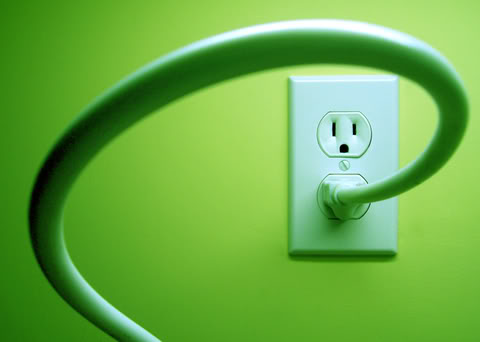What did you do this morning when you woke up? I’m guessing one of the first things you did—perhaps without even thinking about it—was flip a switch, press a button or plug something in. An
May 27, 2011

By Michael Houghton 2

Plug-and-Outlet
What did you do this morning when you woke up? I’m guessing one of the first things you did—perhaps without even thinking about it—was flip a switch, press a button or plug something in. And what do all of these morning rituals have in common? They rely on energy—and lots of it. As a solution provider, our energy dependence can be your ticket to accelerated growth. Here are three reasons why you should be plugging into the energy and utilities vertical.They include…
1. Vast Opportunity; Familiar Technologies
Analysts project the IT opportunity of the energy and utilities market for 2011 to reach USD $21.9 billion, with a compounded annual growth rate of 4.5 percent through 2014. Those are impressive numbers on their own, but when you consider the importance of energy to our lives—as well as to our nation’s growth, productivity and national security—and the new initiatives underway to optimize energy distribution through data sharing, the future of the market seems bright indeed.
In many ways, specializing in energy and utilities is a matter of applying the data center technology expertise your organization may already have to the needs of this growing market. Mainstream technologies such as virtualization, security, storage, networking and even cloud computing have applications in the energy market. If you’ve successfully helped customers tackle problems in any of the areas below, you’re a good candidate for energy market specialization. These fast-growing segments of the energy and utilities market are also high priorities in other industries:
Utilities data management
Utilities infrastructure optimization
Asset, device and service monitoring
Utilities risk management and compliance
2. The Smart Grid Revolution
Electric grid stakeholders representing utilities, technology providers, researchers, policymakers and consumers have worked together in recent years to define the functions of a “Smart Grid.”
According to the U.S. Department of Energy’s Office of Electricity Delivery and Energy Reliability, the Smart Grid is defined as the system that delivers electricity from suppliers to consumers using digital technology to save energy, reduce cost, and increase reliability and transparency. Like the telecommunications and Internet revolutions that have shaped our lives, technology holds the key to this revolution as well. More than “smart meters,” a fully functioning Smart Grid will feature meters, sensors and other IP-based devices throughout the transmission and distribution grid to collect data. For those meters and sensors to work, the Smart Grid will also require real-time two-way communications to move that data and electricity between utilities and consumers, as well as the computing power necessary to make that intelligence actionable and transaction-enabled.
Between the electric grid we have now and the “smarter” one of the future, there’s a hefty amount of modernization to do. As the U.S. Department of Energy says, “By making an essential set of investments we will help bring our electric grid into the 21st century using megabytes of data to move megawatts of electricity more efficiently, reliably and affordably.”
Now that’s what I call a roadmap to profits!
3. Heightened Security Requirements
As this post is penned, a new government cybersecurity proposal is in the news. The White House issued a plan to secure critical U.S. infrastructure and federal computer networks—with the goal of fending off attackers while assuring the privacy of Internet users. Per the proposal, the Department of Homeland Security would take the lead to ensure the federal government’s computers are protected. Among the computer systems the proposal is intended to protect are those directly aligned to our electrical grid and associated utilities. While the fate of this proposal is unclear, it raises grid security to an unprecedented level.
There are also new risk management requirements in the grid and Smart Grid arenas that have the capability of boosting security sales. The North American Electric Reliability Corporation (NERC) and National Institute of Standards and Technology (NIST) have both submitted standards/guidance documents aimed at protecting the entire electric grid, including bulk power and distribution systems. Ultimately, what all of this means for utilities going forward is that they will have to implement and manage IP environments—in addition to generating and distributing electricity.
Power Your Success
It’s a safe bet that global demand for reliable, cost-effective energy will only increase in the future. By specializing in the energy and utilities market now, you can set the stage for success. To get a jump-start, you can turn to Nicole Evans and the experts in our Avnet EnergyPath practice. The EnergyPath team can help you identify and assess your business infrastructure, capabilities and strengths, align your business with the most lucrative, high-growth segments of the energy market, as well as map a detailed strategy for your success. Energy and utilities is one of several vertical specializations offered through Avnet Technology Solutions, each leveraging the business-building strengths of our proven SolutionsPath methodology.
 At your next business strategy planning session, take some time to consider specializing in the energy and utilities market. Don’t forget to turn the lights off when you’re done!
At your next business strategy planning session, take some time to consider specializing in the energy and utilities market. Don’t forget to turn the lights off when you’re done!
Michael Houghton is VP of vertical market solutions for Avnet Technology Solutions, Americas. Monthly guest blogs such as this one are part of The VAR Guy’s annual sponsorship. Read all of Houghton’s guest blogs here.
You May Also Like
